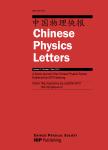Characterization of Scanning SQUID Probes Based on 3D Nano-Bridge Junctions in Magnetic Field
Characterization of Scanning SQUID Probes Based on 3D Nano-Bridge Junctions in Magnetic Field作者机构:Center for Excellence in Superconducting ElectronicsShanghai Institute of Microsystem and Information TechnologyChinese Academy of SciencesShanghai 200050China Department of Physics and State Key Laboratory of Surface PhysicsFudan UniversityShanghai 200438China University of Chinese Academy of SciencesBeijing 100049China Shanghai Research Center for Quantum SciencesShanghai 201315China
出 版 物:《Chinese Physics Letters》 (中国物理快报(英文版))
年 卷 期:2020年第37卷第8期
页 面:31-35页
核心收录:
学科分类:0809[工学-电子科学与技术(可授工学、理学学位)] 08[工学] 0803[工学-光学工程]
基 金:Supported by the National Key R&D Program of China(Grant Nos.2017YFF0206105,2016YFA0301002 and 2017YFA0303000) the Young Investigator Program of CAS(Grant No.2016217) the Frontier Science Key Programs of the CAS(Grant No.QYZDY-SSW-JSC033) the Strategic Priority Research Program of CAS(Grant No.XDA18000000) the Shanghai Municipal Science and Technology Major Project(Grant No.2019SHZDZX01) the National Natural Science Foundation of China(Grant No.11827805)
摘 要:We develop superconducting quantum interference device(SQUID)probes based on 3D nano-bridge junctions for the scanning SQUID *** use of these nano-bridge junctions enables imaging in the presence of a high magnetic ***,a superconducting ground layer has been employed for better magnetic *** our study,we prepare a number of scanning SQUID probes with and without a ground layer to evaluate their performance in external magnetic *** devices show the improved magnetic modulation up to 1.4 *** is found that the ground layer reduces the inductance,and increases the modulation depth and symmetricity of the gradiometer design in the absence of the ***,the layer is not compatible with the use of the scanning SQUID probe in the field because it decreases its working field ***,by adding the layer,the mutual inductance between the feedback coil and the SQUID also decreases linearly as a function of the field.



